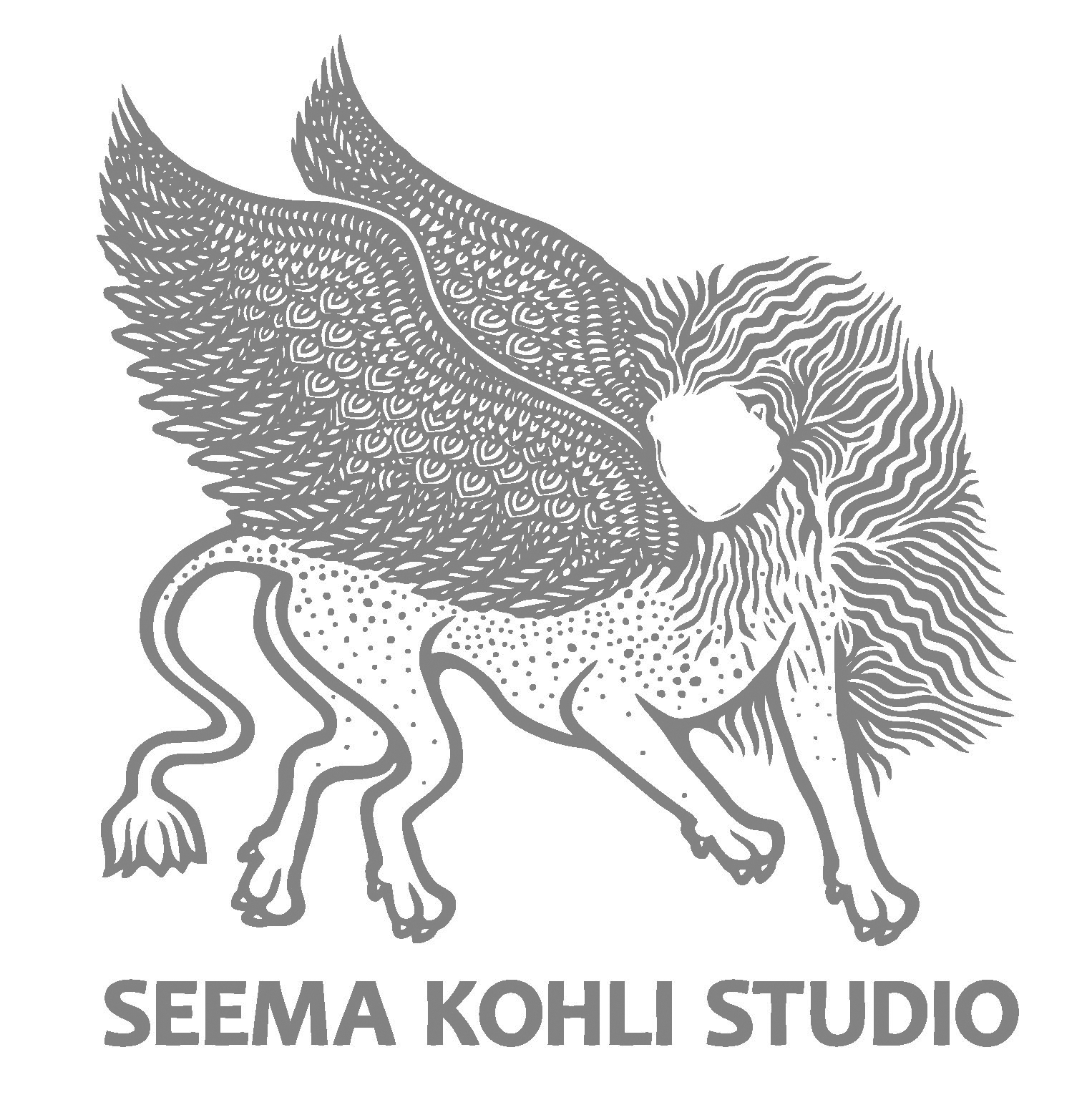Returning to Mumbai for a solo exhibition after six years, renowned artist Seema Kohli foregrounds questions of time, labour, and movement in this new body of paintings and sculptures. Deconstructing the hierarchy of the clock, the artist calls on us to lean in and imbibe the subliminal rhythms of our planet. The beating of hearts, phases of the moon, cycles of menstruation, flow of seasons sing forth from her vivid visions. These tellurian pulses foster connections between our bodies and the energies that move alongside, an antidote to the isolation of modern life. Adorned with mountains, stars, and trees, Kolhi’s figures wear their interdependence as the full moon’s light, a badge of love, of a kinship across species and materialities.
“..when i found You hiding inside me, I ran wild, playing now me, now You” — Lal Ded
Whirling in the syncretic teachings of Kashmiri mystic Lal Ded, Kohli is both disciple—in her own eyes—and beacon for us. In a pièce de résistance, she offers insight into Lal Ded’s moment of ascension, occupying an unruly human body while communing with the unbound cosmos. “Kohli’s works offer precious unions of Saivite and Sufi, corporeal and cosmic, multiple and whole, sea and seed; talismans towards healing in these fractured times,” writes curator Shaunak Mahbubani
The artist celebrates the labour of birthing, care, repair, and resistance undertaken by women for centuries, visualizing the adjacency between feminine and forest, of bodies relegated to reproduction, unrewarded and unrecognized under the regime of material productivity. In a poignant series, Kohli pays homage to this reciprocity through the trailblazing women of the Chipko movement (Gharwal Himalayas, 1970 onwards) deeply imprinted in her memory from when she was a child. Constantly exploring new mediums, the artist has created a new fragrance for the exhibition space combining earthy and forest notes, as a juncture between body, recollection, and foliage.
Turning her gaze towards the underbelly of gender and recognizing the shadow side of mythological representation, the artist leaps into new territory, birthing what Ursula Le Guin has termed,“her third self”. Across the elements—wood, bronze, canvas—eagles and swans with wings outstretched accompany her flight, channeling courage and introspection respectively. In deftly conjoining her lineage of spiritual eco-feminism with a renewed hunger for equitable worlds, Seema Kolhi marks herself as a force that can neither be contained nor forgotten.

